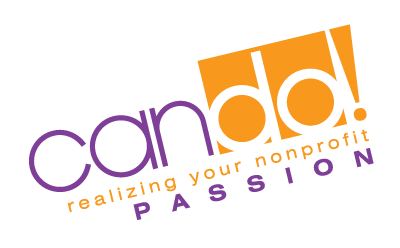Board Meetings Help Establish a Healthy Work Culture
While board meetings may occupy the realm of the mundane in our minds—a task that carries undertones of obligation rather than inspiration, nuts-and-bolts rather than boots-to-the-ground—the purpose and importance of these meetings should not be overlooked. In many ways, board meetings are a cornerstone of nonprofit operations, and can make or break an organization’s ability to translate vision into real world impact.

In plainest terms: board meetings should accomplish something. While this may seem obvious, unproductive board meetings are such an epidemic, the effective facilitation of meetings is a skill in and of itself. Because time spent in these meetings is essential for moving your nonprofit forward with its goals, it is crucial to plan ahead in order to establish a strong structure. Board meetings are, essentially, an opportunity for everyone to get on the same page about goals and next steps. Strong group consensus is crucial for success in any organizational effort.
The established structure of these meetings not only helps mitigate and minimize unnecessary distractions and make the most of the allotted time, but is an opportunity to support a healthy work culture. Board meetings are a reflection of the organization itself, including how gracefully interpersonal elements are managed, a sense of mutual respect between board and staff, and an ability to clearly define and rally shared values as a source of motivation.
Who Should Attend Nonprofit Board Meetings?
Ideally, attendance of board meetings should be limited to the board of directors, executive director, and executive staff. (Executive directors and paid staff legally should not serve on the board, but their attendance of meetings is often beneficial. Read more here.) With the exception of occasional guest speakers, the people who spend the most time talking in meetings should be the executive director and board members, with attending staff taking on a more secondary, listening role. Having clear boundaries about who holds the floor can help mitigate the temptation for irrelevant conversation, or eating up time grappling with issues that would be better addressed elsewhere.
How Often Should Your Nonprofit Hold Board Meetings?
It is common for boards to meet monthly or quarterly. This frequency allows for everyone to decide on a date and time beforehand, and encourages board members to focus on overall strategy rather than get hung up on the less-relevant details. Meeting too often will often result in poor attendance and a sense of redundancy or pointlessness. Likewise, meeting too infrequently will make it more difficult to achieve organizational goals, as precious time will be spent recalling where previous meetings left off, before everyone can begin to determine how to move forward.
Facilitation of Nonprofit Board Meetings
Holding a Strong Container
Regularity and consistency is important. This not only applies to how often board meetings occur, but to the structure of the meetings themselves. A strong meeting structure has all the basic elements of a story: a beginning, a middle, and an (open) ending. It has a beginning that functions to get everyone present and focused onthe task at hand, re-centering shared goals and values. It has a middle that helps move the “plot” forward, determining next steps or outlining an action plan. It has an open ending that dictates where the group will pick up again during the next meeting.

Facilitating a productive board meeting requires using allotted time as effectively as possible. This means keeping attendees on task, reigning in rabbit trails and irrelevant detours in conversations, and continuously returning to the pre-established agenda.
The basic facilitation of a board meeting is as follows:
- Create an agenda and share with board members beforehand.
- Begin meeting on time.
- Establish that there is a present quorum.
- Read mission/vision statements.
- Reiterate meeting goals and keep everyone on task.
- Designate a timekeeper and person to record meeting minutes.
- Discuss the next meeting’s agenda items and conclude the meeting on time.
Creating an agenda and sending it out to attendees beforehand will do a lot of the legwork of getting everyone on the same page, so that when people enter the meeting time they are already oriented and more quickly able to dive in. It can be helpful to discuss the most important agenda items early in the meeting, when members are most engaged.
The meeting agenda and all pertinent attachments should be provided at least one week in advance. This includes past meeting minutes, financials, the Executive Director report, and all other relevant reports or documents for that particular meeting agenda. This will help keep the meeting more orderly and efficient, and allow board members to be more prepared with questions or comments.

Keep things formal, well-boundaried, and professional in order to discourage eating up time to address interpersonal issues or dynamics. The interpersonal element of running a nonprofit is always present, but board meetings are not the ideal place for this kind of organizational management. Remember: the more clearly you define and reiterate the goal of the meeting, the better able you are to rally the troops to achieve that goal.
Delegate responsibilities to ensure people feel like their participation is needed. Traci Kantoski’s concept of assigning “board champions” in which one board member will champion a specific project/task to completion is one such example, but there are many ways to support a culture of delegation. The key here is that by assigning roles and responsibilities for individuals to carry out in order to achieve a group goal, they are naturally motivated to do what they are supposed to do.
Time Management
Starting and ending your meeting on time will encourage punctuality, as well as illustrate respect for one another’s time as part of your work culture. It can be helpful to designate a timekeeper who can monitor and signal time constraints to the group. Time frames can be integrated into the agenda for each topic. For example:
- Roll Call (3 min)

- Approval of past meeting minutes (5 minutes)
- President’s Report (5 minutes)
- Treasurer’s Report (5 minutes)
- Committee Reports (15 minutes)
- Executive Director Report (15 minutes)
- Old/unfinished business (20 minutes)
- Put detail of what will be discussed
- New Business (20 minutes)
- Put detail of what will be discussed
- Announcements (10 minutes)
- Adjournment (1 minute)
Of course, these time allocations act as basic parameters, and some topics may need more discussion. Be realistic about time frames when crafting the time limits into the agenda, and pad time wherever it is likely you will need to be flexible, or you know people will have a lot to say. Having time limits clearly broken down in advance will keep each topic discussion shorter and support ending the meeting on time.
When people have a sense of the time boundaries, they are more likely to self regulate and get to the point. If possible and practical, encourage a culture where everyone has a chance to speak. If meetings tend to be monopolized by one or two speakers, adjust time boundaries to limit how long each person can speak (such as 2-3 minutes per person) and limit the number of times one person can speak (such as 2-3 times per topic).
A simple technique for supporting self regulation is to invite people to “step up, or step back.” This means that before people take the floor, the meeting facilitator can clearly state something to the effect of: “People who tend to have a hard time taking up space are encouraged to step up, and people who tend to talk a lot are encouraged to step back.” Most people are fairly self aware in this regard, and will rise to the invitation to be self responsible for respecting the group’s time limits.
To dive deeper into essential elements of productive board meetings, check out our blog Nonprofit Board Meeting Basics: Agendas, Establishing a Quorum, Minutes.



